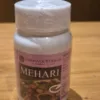Lavanga
|
Botanical Name |
Syzygium Aromaticum |
|
Family |
Myrtaceae |
|
Sanskrit |
Bhadrasriya, Devapushpa, Divyagandha |
|
English |
Cloves |
|
Hindi |
Laung, Lavang |
|
Kannada |
Lavanga |
|
Malayalam |
Grambu |
|
Telugu |
Karavulu, Lavangamu |
|
Tamil |
Kirambu |
|
Marathi |
Lavang |
Distribution
Found in many asian islands. In india cultivated mainly in kerala and tamilnadu
|
Parts Used |
Floral Bud, Clove Oil |
|
Dose |
Churna:1-2gm, Oil: 1-3 Drops |
Chemical Constituents
Polyoxygenated chromone, eugenol, naphthalene, ß caryophyllene, methyl alcohol , methyl benzoate, etc.
Ayurvedic Properties
|
Quality (Guna) |
Laghu , Snigdha |
|
Taste (Rasa) |
Tikta, Katu |
|
Metabolism (Vipaka) |
Katu |
|
Potency (Virya) |
Shita |
|
Impact (Prabhava) |
Chedana, Netrya |
Pharmacological Action
- Anti fungal ,anti microbial: this property makes this a good fungicidal.
- Anti carcinogenic: it kills certain cancerous cells in the body.
- Anti pyretic: helps in relieving body temperature and curing if any inflammation if present.
- Anti oxidant: helps in slowering the ageing process.
- It is a good expectorant thus relieving productive cough.
- It is a good blood purifier thus helps in curing skin diseases.
Therapeutic Uses
- Clove buds are chewed in cases of tooth ache and its infection.
- For certain skin diseases it is applied externally.
- Clove oil is given internally for digestive disorders.
- Lavanga taila is applied externally in rheumatoid arthritis.
Some of the common formulations
- Avipathikara churna
- Lavangadi vati
- Khadiradi vati
- Babbularishta
- Eladi churna
- Irimedadi taila
- Karpuradi churna
- Lavangadi vati etc




